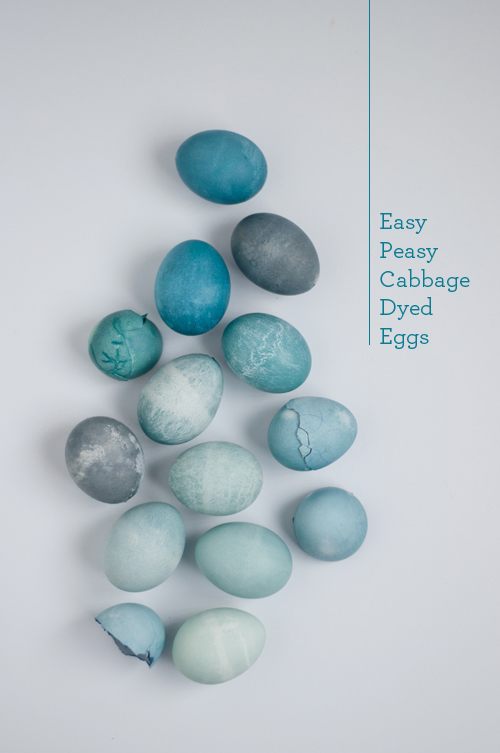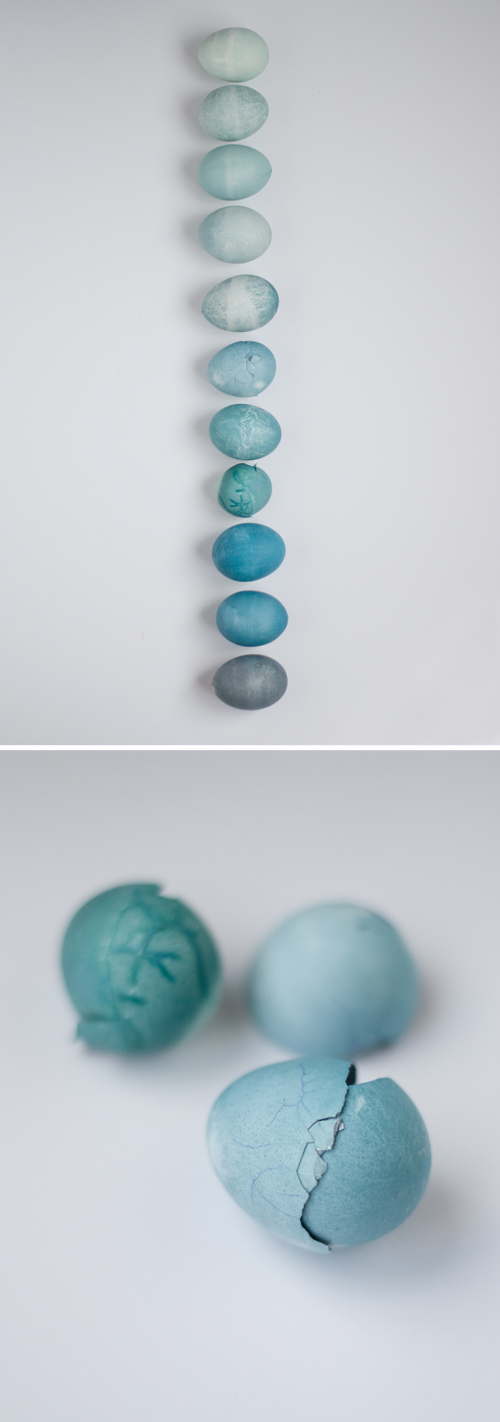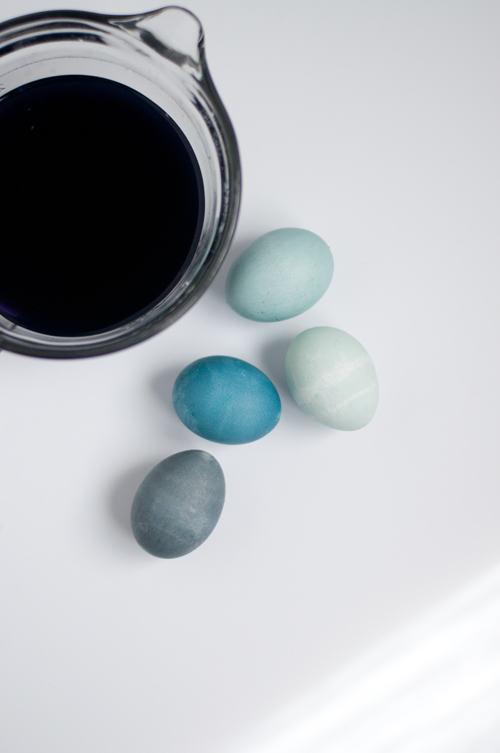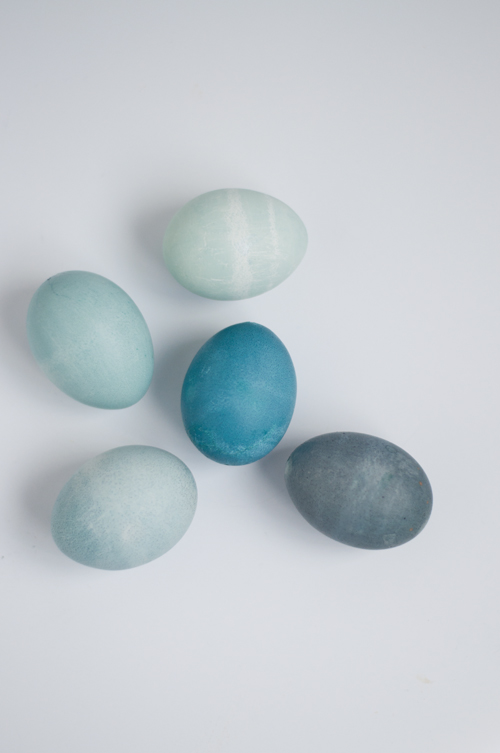
By Gabrielle. Photos and styling by Amy Christie.
I love the look of eggs dyed with plants and flowers, but every time I’ve planned on attempting it in years past, I get intimidated sourcing dye ingredients and stop myself up. So instead of gathering a dozen different materials and spending too many hours experimenting, I decided that this year, I would focus on one easy to find plant and see what it could do.
The plant? Common red cabbage. Available in every produce department of every grocery store in the country. Yes, it looks purple or sometimes red, but did you know it makes a great blue dye? It’s one of those things that’s hard to believe until you try it yourself.
I love how they turned out so much I even want to keep the broken shells.
I felt so much happy anticipation checking and rechecking them to see how the colors were changing. I could hardly wait to see the final results.
Get the details below!
Supplies for One Batch of Blue Dye:
– 1 head of red cabbage, chopped
– 4-5 cups of water, dependent on the size of the cabbage head
– 1 to 1 1/4 Tbsp white vinegar
– baking soda, optional
– eggs to dye
– big pot, colander, cups for dye, towels
Toss the chopped cabbage into a large pot with the water. Bring the water to a boil and then simmer for 20-30 minutes. When it is complete, add in the white vinegar.
White vinegar is an acid which helps with the dye process. In my observations, the white vinegar also act as a color lightener. When I added it to my first batch of cabbage dye, I was nervous because I noticed the tone lighten to a more purply hue. In my research for this project, I found that baking soda acts in the opposite way. I added a pinch of it to the dye and the tone quickly turned more blue. I am not a chemist and, for the most part, I chalk the whole process of dyeing up to magic.
So how do you get the different tones with just cabbage? Easy peasy. Simply vary the length of time the eggs spend in the dye bath. The deeper the tone, the longer the time. In fact, the deepest tones sat overnight! It was an easy process. I submerged the eggs and would just keep checking on them until I liked the tone.
All of tones pictured were achieved with cabbage — with one exception. The navy tone was achieved using a blueberry dye. Blueberries, crazy enough, make a reddish dye. I used a little of that with my blue dye to get the navy.
The blueberry dye mix I used was 2 cups water to 2 cups blueberries. I boiled them together for about 30 minutes and then I added 1/2 Tbsp of white vinegar.
And that’s it! If you’ve every wanted to experiment with natural dye, I highly recommend red cabbage as the perfect starting point — that one ingredient can create a full ombré look!
Tell me, Dear Readers, have you ever tried dyeing your eggs with plants or vegetables? Do you have a favorite technique? I’m especially interested in easy-to-find ingredients that I can pick up at 11:00 PM when I’m at the grocery store buying last minute lunchbox ingredients any way. : )
Also, I’d love to hear if you’re trying any special techniques to dye your eggs this year?
P.S. — More natural dye! Use onions for orange, turmeric for yellow, and beets for red, and here’s how to make green.






